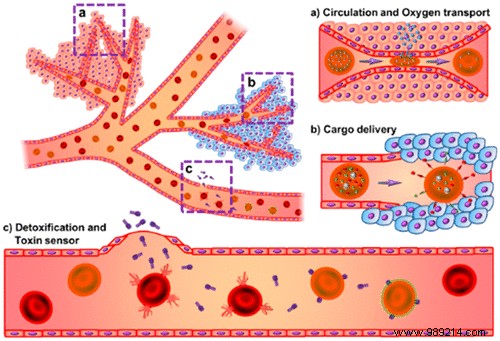Researchers say they have reproduced a fully functional red blood cell. This is referred to as "biomimetic reconstruction". For scientists, this innovation could fuel new medical functions in the blood system. It could also cure several diseases and improve certain treatments.
Researchers have long wanted to synthesize a material capable of reproducing the properties of red blood cells . In a publication in the journal ACS Nano of May 11, 2020, American and Chinese scientists say they have reached the goal. Optimism is warranted since there is talk of future use to improve the yield of many treatments . The researchers also announce the possibility of treating certain diseases such as sickle cell anemia, an inherited genetic disease affecting the chains of hemoglobin.
Previously, other studies had allowed some progress but none demonstrated as many fundamental properties of the red blood cell. You should know that red blood cells must be flexible in order to circulate in the blood system. Remember, however, that the latter is composed of a network of arteries and veins but also much finer capillaries. Red blood cells act as oxygen carriers via their hemoglobin molecules. In addition, these must have a lifespan of at least ten hours in order to circulate everywhere in the blood system.

Dr. Wei Zhu's team used the "silica bioreplication" technique to obtain this artificial red blood cell. It involves depositing silica acting as a mold on a natural red blood cell. Then, it is incumbent to proceed with the demolding and then the exposure of the mold to several layers of polysaccharide polymers . In passing, remember that these natural polymers are very often used because of their low toxicity and their biodegradable nature. After the polymers have been deposited, the silica is removed and a natural membrane from a natural red blood cell is deposited. Thanks to its identifying proteins , this membrane will allow the good circulation of the artificial red blood cell throughout the blood system.
In addition to circulating oxygen, the researchers also raise the possibility of using this kind of artificial blood cell as a "cargo" . The goal? Improve the distribution of medical molecules. Indeed, scientists want to cure certain diseases by gradually replacing red blood cells in patients.